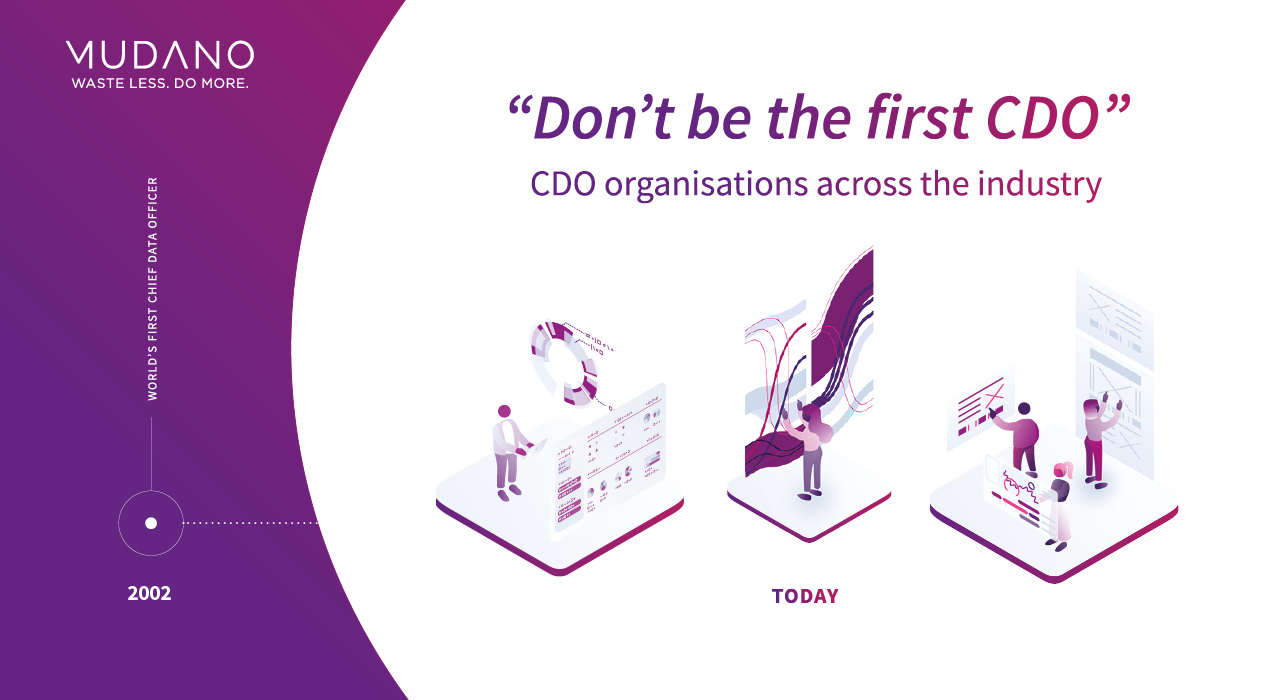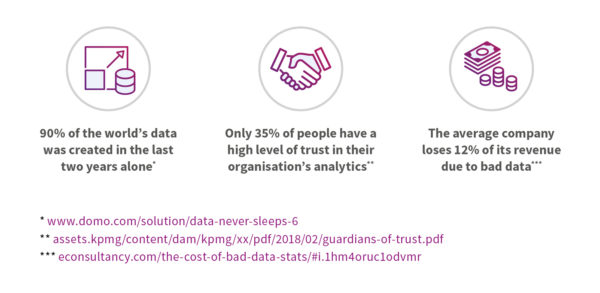Don’t be the first CDO – What makes up a data organisation part 1

Data is the future of your business. Data is the new oil. Your data is your most powerful asset.
Whichever way it’s phrased data is changing the world in which our businesses operate. Being a leader today means driving the impact of data on customer experience, innovation and strategy across your organisation.
There is an increasingly pressing need for a leader to understand and advocate data at the highest levels of your organisation – to deliver data-driven growth.
This role is the Chief Data Officer.

What are the success criteria of an effective CDO
When building a Chief Data Office in your organisation it is important to have a set of criteria around which the CDO is built. As the CDO is, by necessity, a driver within your organisational structure. This means that the pillars upon which your CDO is founded and structured needs to be sound in order to be successful.
There are four main criteria that are needed to determine a Successful CDO:
- Data is trusted within the organisation
You have data to back up your opinions, and others expect you to come armed with the facts. That is the data culture towards which a CDO needs to
drive the organisation.
- Business strategy is data-led
The future of your business is in the data it holds, manages and exploits. A successful CDO needs a compelling argument at the highest levels of the organisation to ensure that data is being leveraged effectively and with buy-in across the organisational landscape.
- Existing functions get out of debt
Take the existing capabilities spread across your organisation – from analytics to policy to infrastructure – and get (and keep) them out of trouble. Make sure you’ve got the basics in place so you can deliver value for your customers.
- Change capability is in place to make it possible
Last but not least, you need the engine to back up the vision. A CDO needs to deliver the change required to underpin the business strategy. Without the permission, power and investment you won’t build the right skill set to make the vision a reality.
What approach makes for an effective CDO?
CDOs are in the unusual position of having to do multiple roles simultaneously. These include setting the strategic direction for data within an organisation, being the engine to drive change in an organisation and owning and maintaining business-critical functions. Driving these forward together has a tangible impact on your organisational structure; you need to have a wide range of skill-sets and approaches to marry these goals together.
We recommend a three-pronged process through building teams to steer, change and run your data capabilities.

- Steer
Set the strategic direction for data in the organisation. Define the KPIs by which the CDO will hold itself and others to account. Lead and live the data culture within the organisation – driving data-led behavioural change. - Change
Provide the people, skills and delivery patterns to execute change initiatives. Deliver the change projects for data capabilities within the CDO and the wider organisation. Define approach to prioritise projects which have the highest business impact and deliver the most value. - Run
Run the enablement processes which maintain the foundational data capability. Maintain the policies, capabilities, solutions and infrastructure which make up your data landscape.
The Chief Data Office function is one which has, relatively, not been around for a long time. However, a clear pathway has been formed to guide new CDO organisations to success.
We discuss the different CDO ‘generations’ in the next piece to this blog.